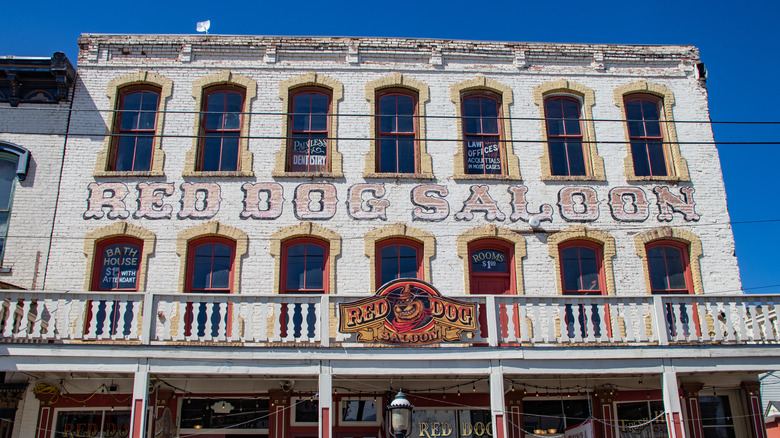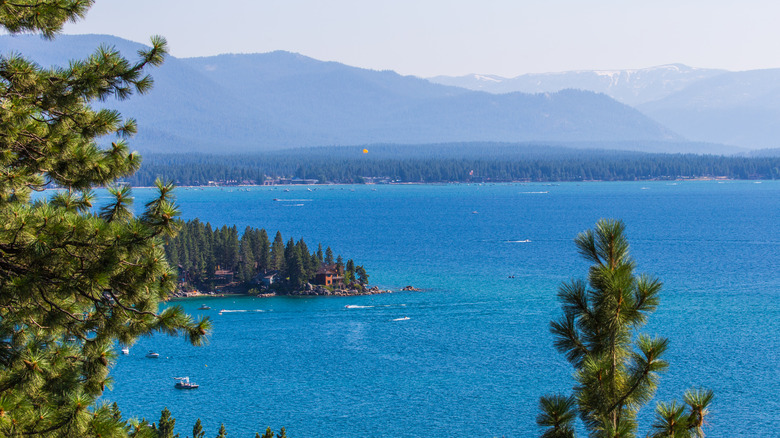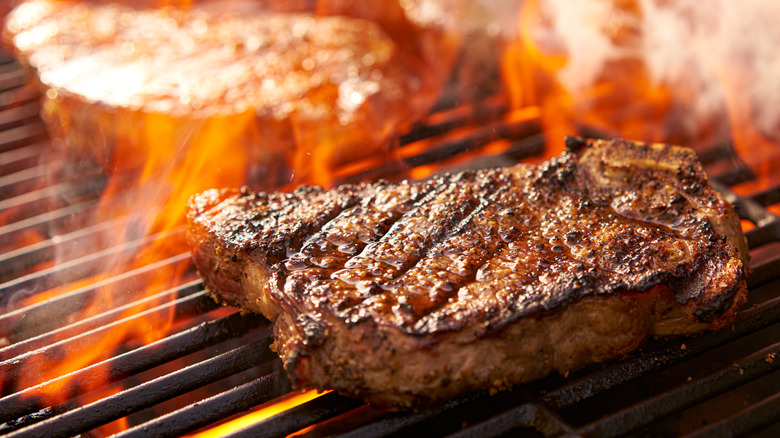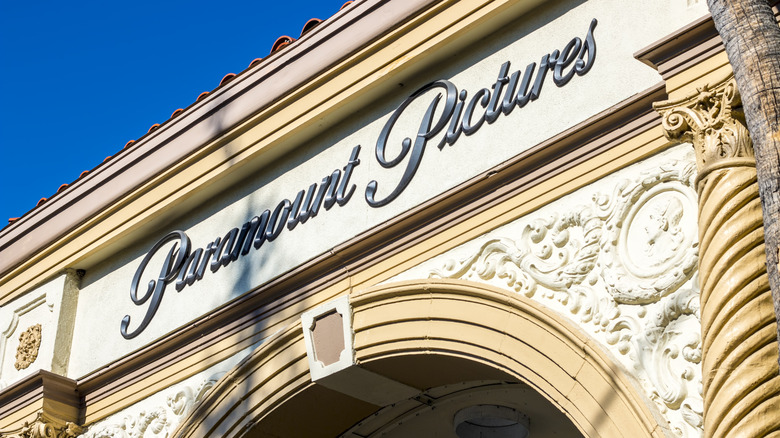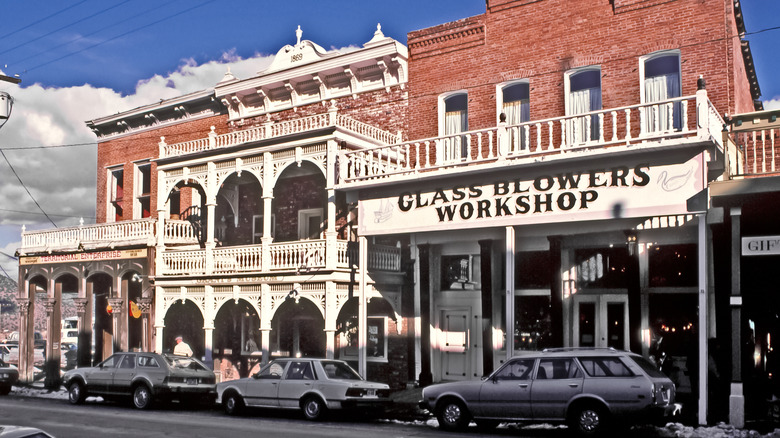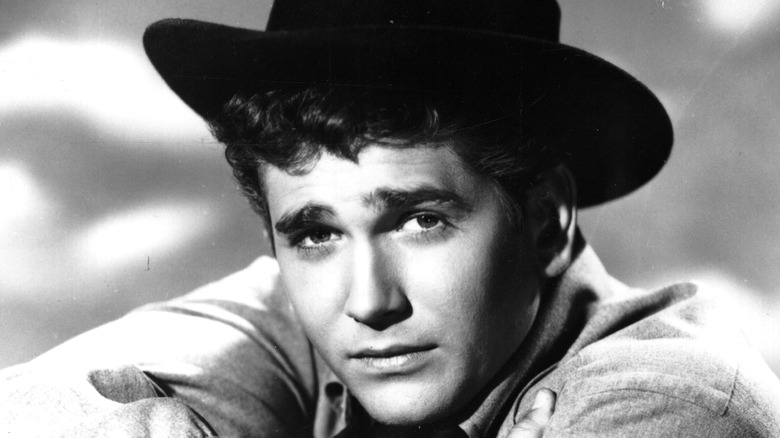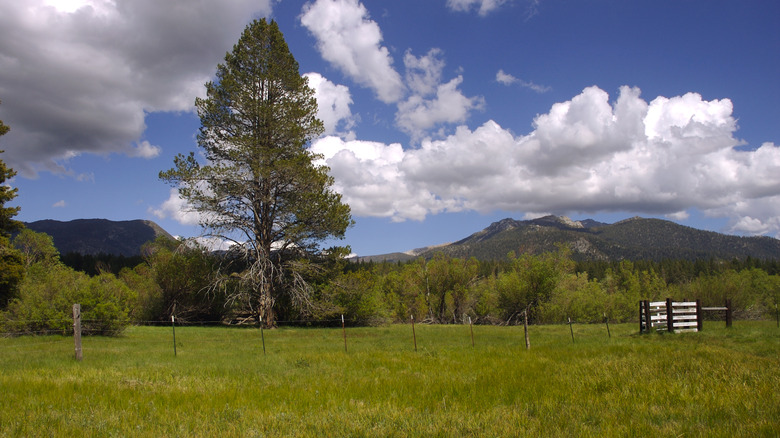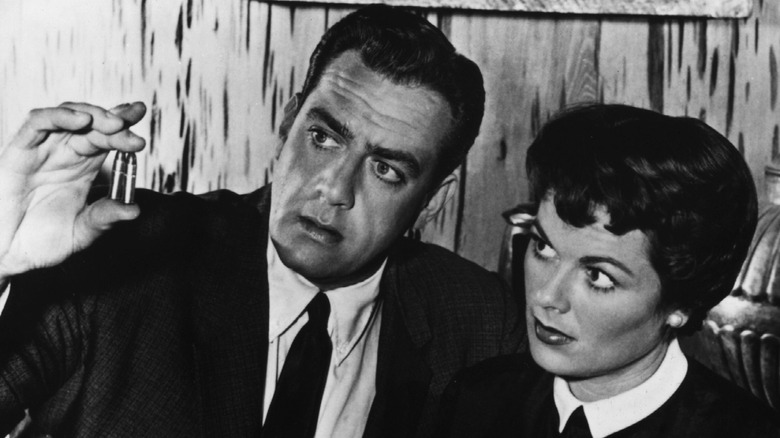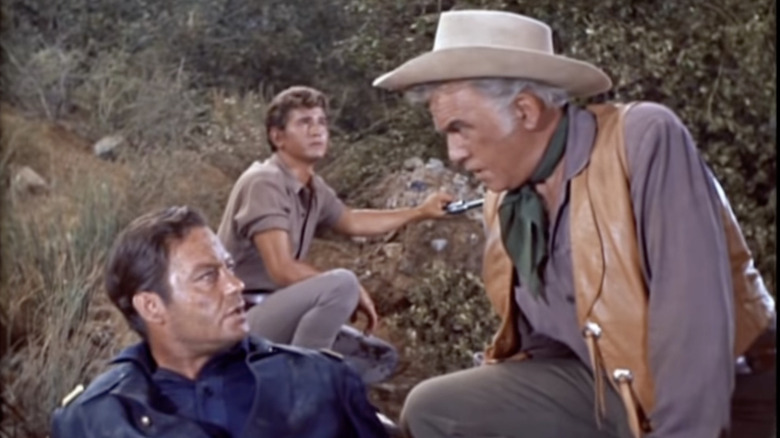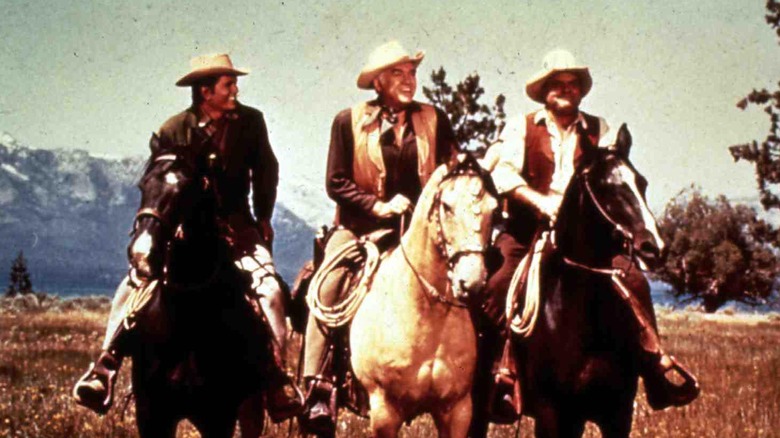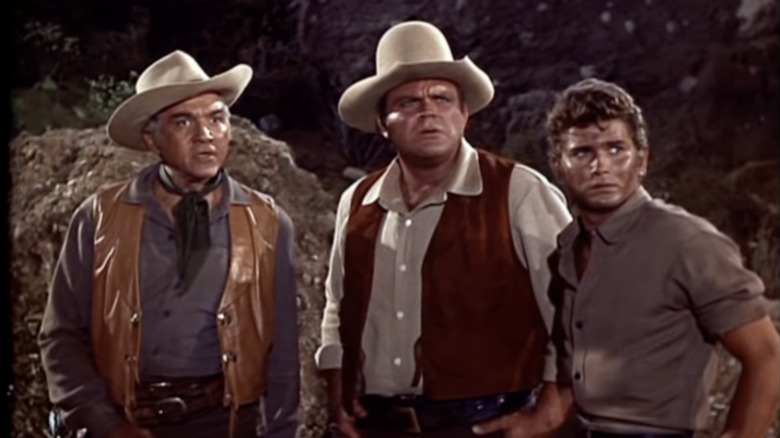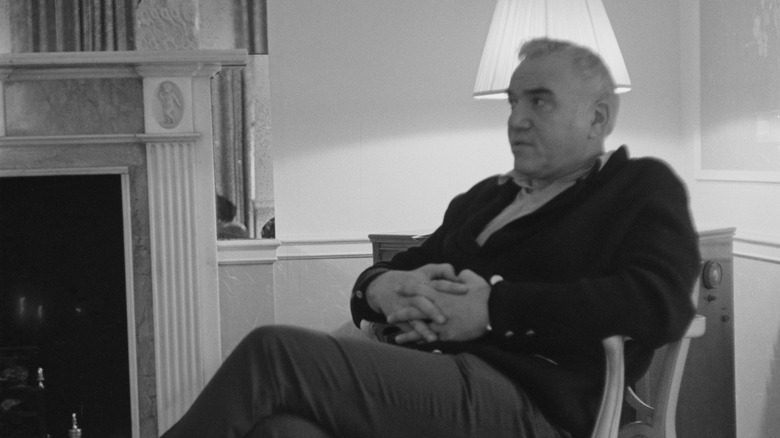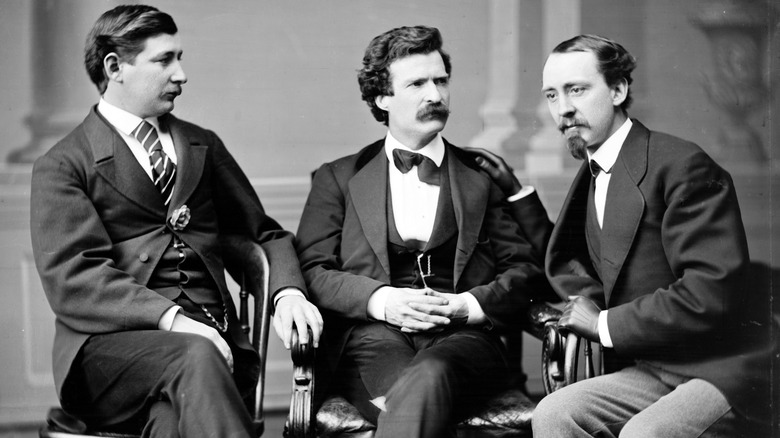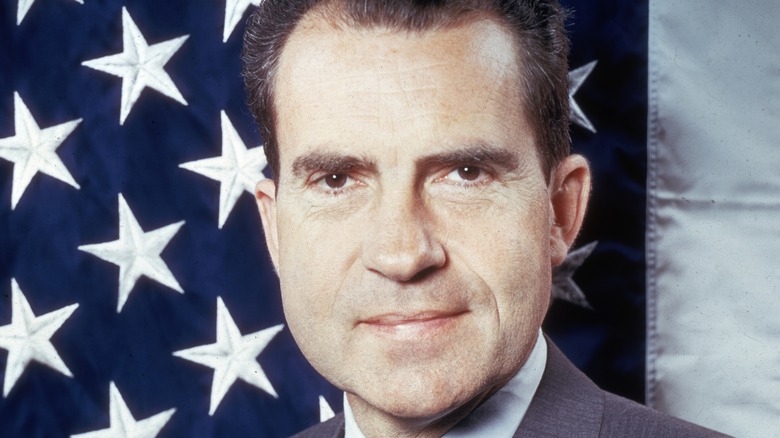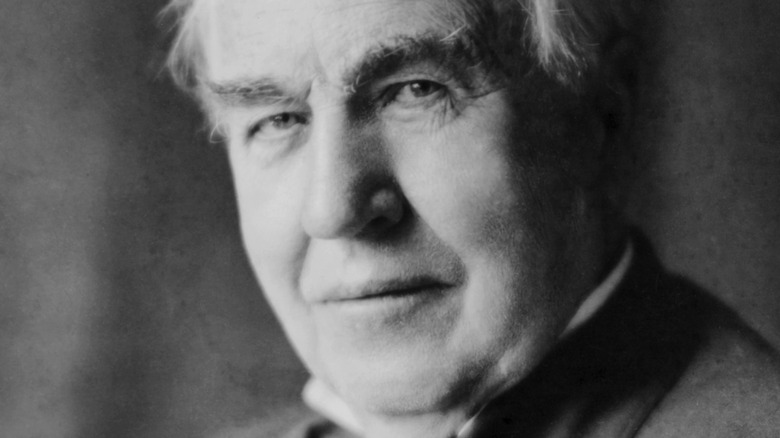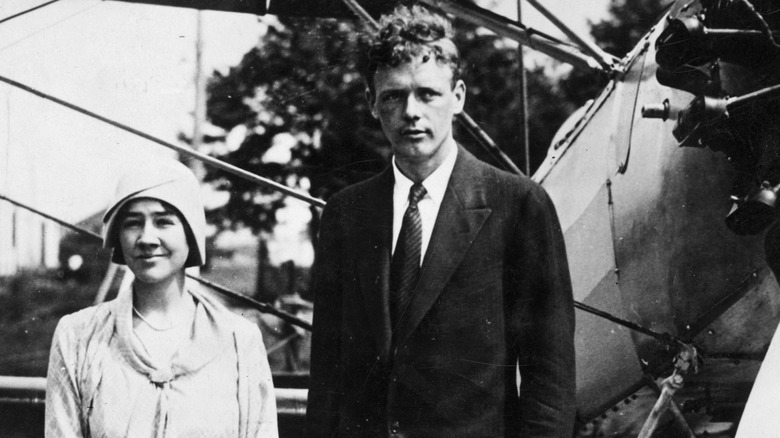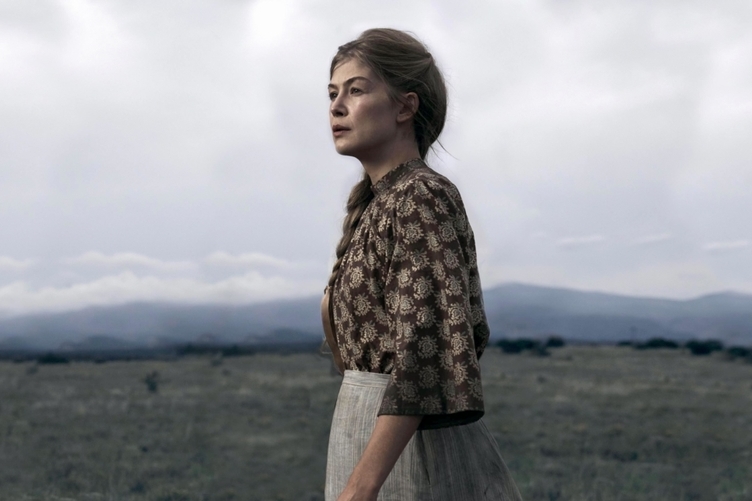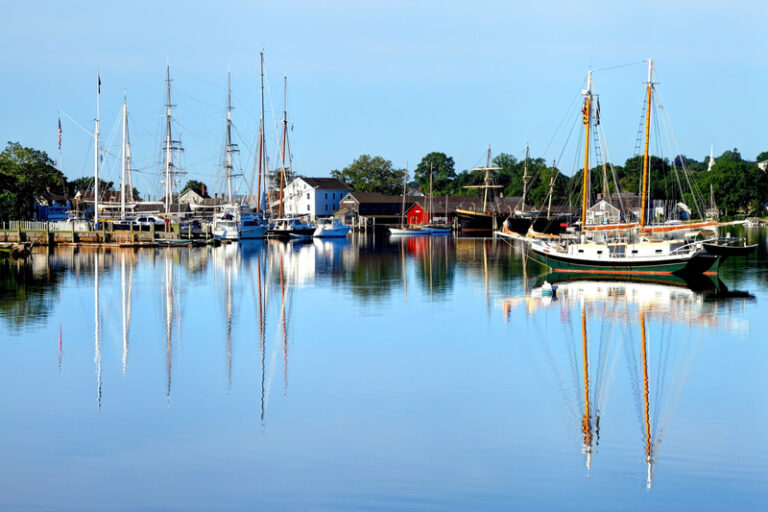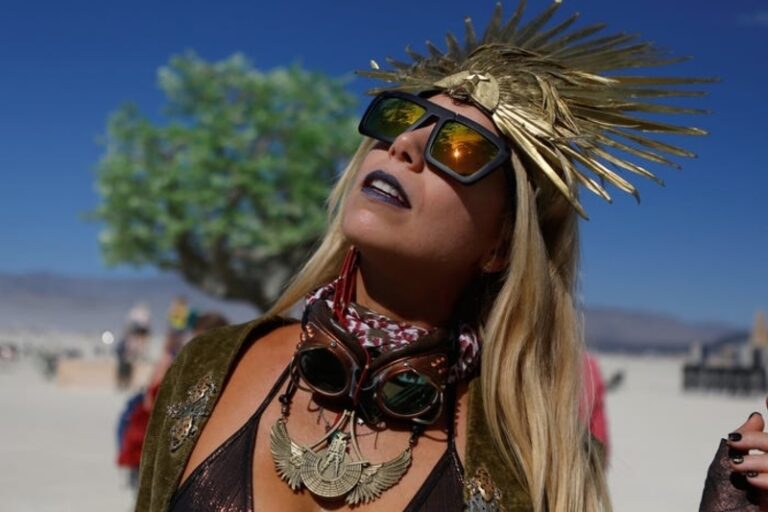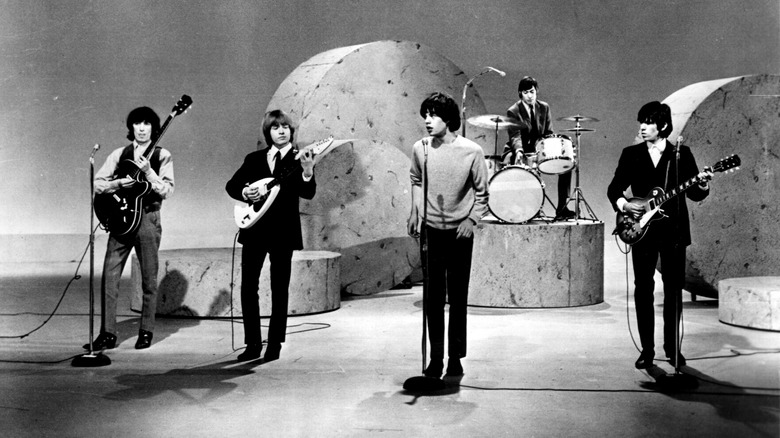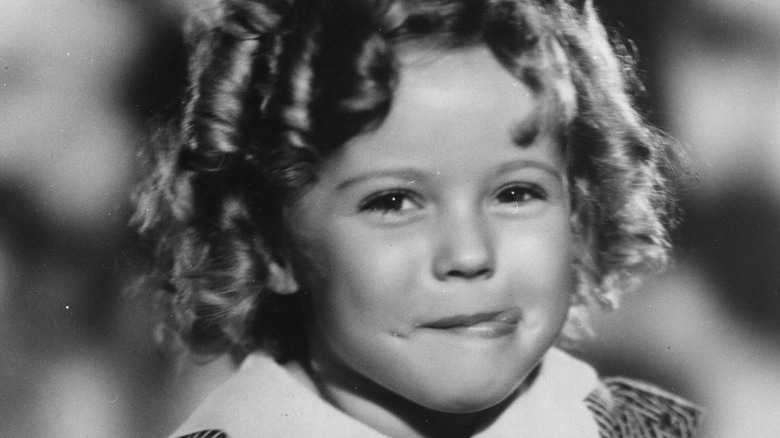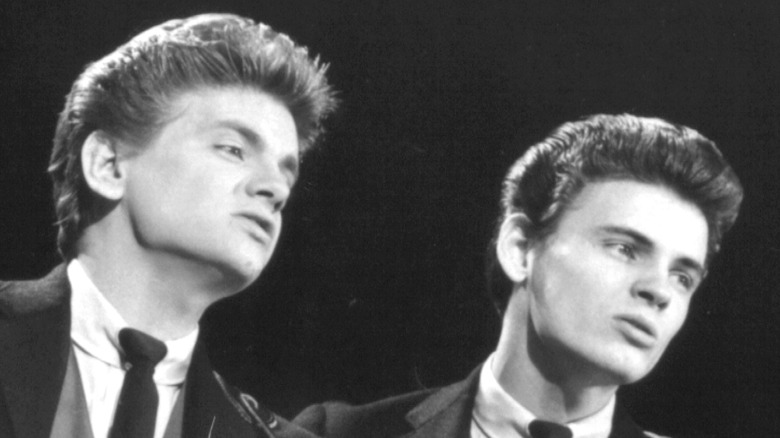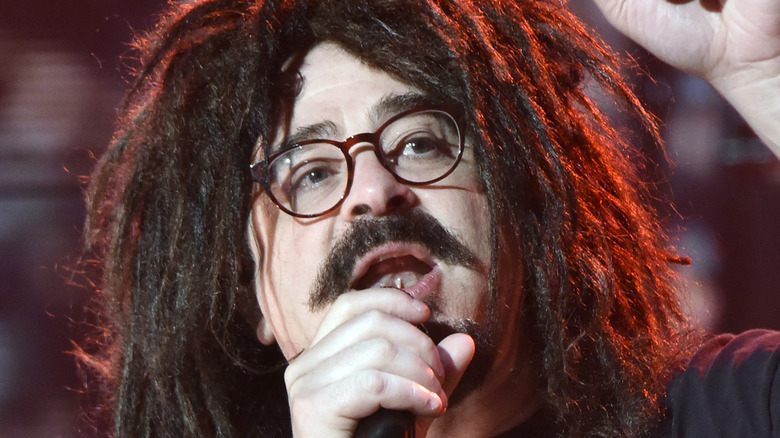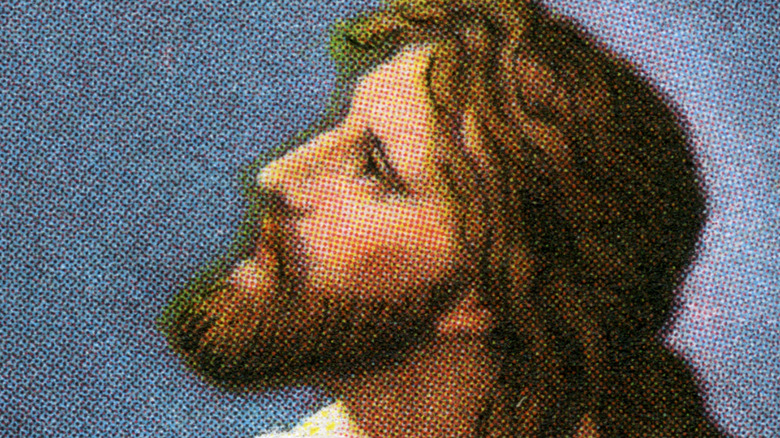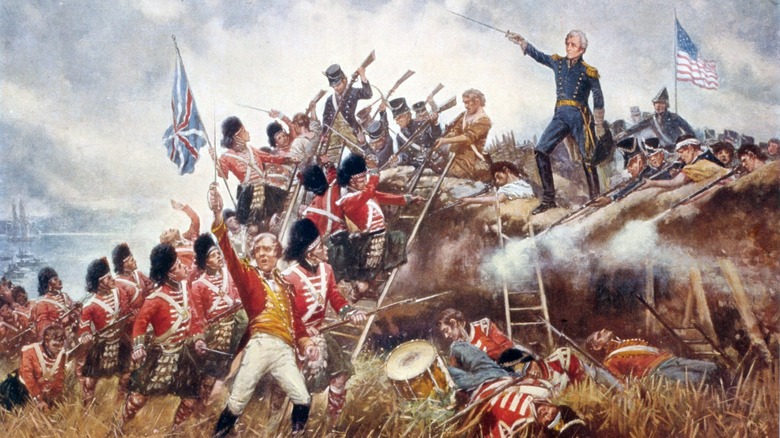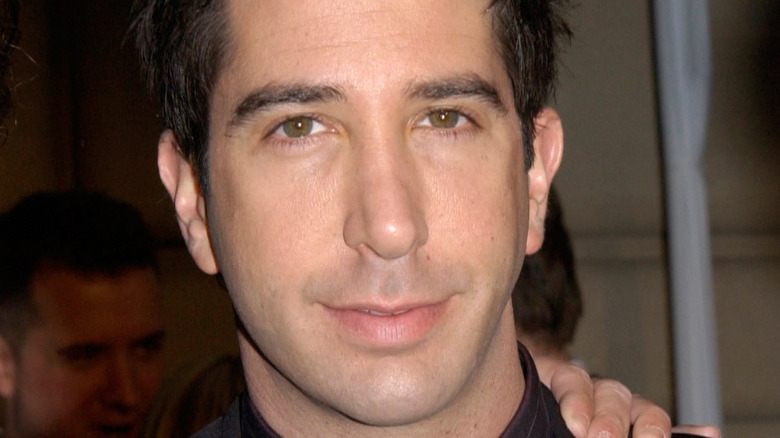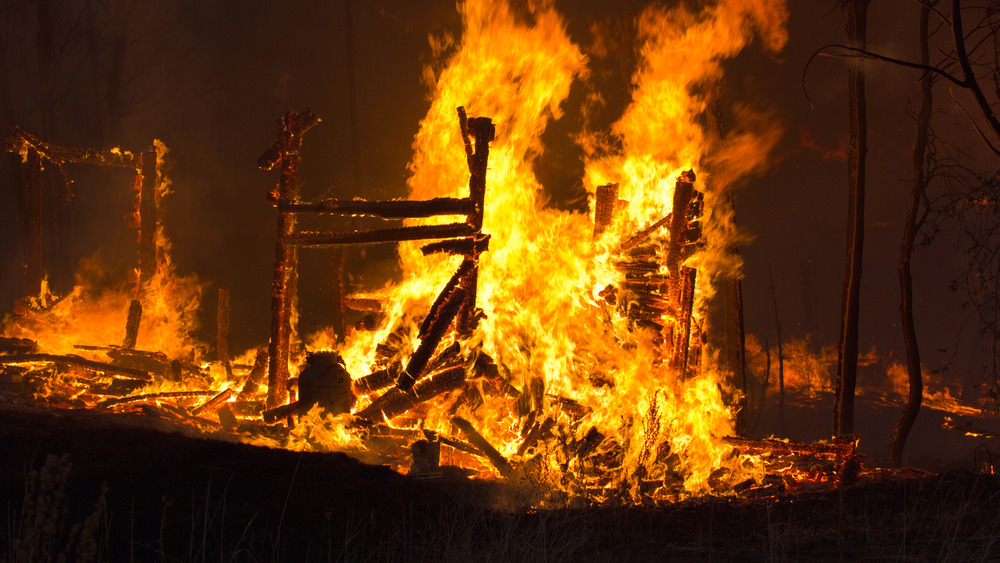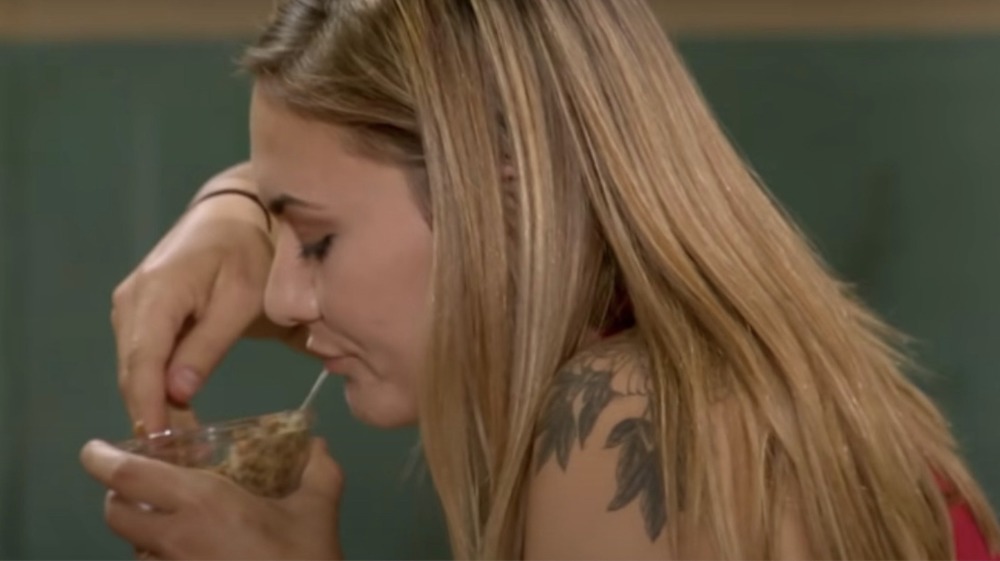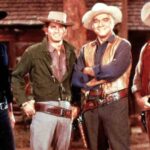
The Untold Truth Of Bonanza
Few westerns have enjoyed more success than “Bonanza,” and with good reason. Not only did the show run for more than a decade, but it consistently delivered fascinating storylines that focused on a simple yet powerful premise: the relationship between a father and his sons. The show’s creator, David Dortort, drew inspiration for the show from the King Arthur legend, per Outsider. Only, he mixed it up by setting the storyline in a Civil War-era frontier mining town amid the fabled Big Bonanza silver strike.
According to Outsider, “Dortort envisioned his patriarch, Ben Cartwright, as King Arthur himself. His knights? None other than the Cartwright sons.” Dortort would continue to provide nods to this inspiration throughout the show’s run, and he defied stereotypes and cliches associated with other westerns in the process. The result? The creation of a pop culture masterpiece that’s stood the test of time.
From its carefully selected geographic location to its brilliant color footage and Dortort’s deep focus on characterization, the show proved a recipe for success. (And the catchy theme song helped, too!) But there’s a lot you may not know about this long-enduring classic. Keep reading for the untold truth about everyone’s favorite family western.
Bonanza infused the early psychedelic rock scene with a cowboy vibe
Before the Summer of Love and Woodstock, the Red Dog Saloon in Virginia City, Nevada, welcomed the founding members of the psychedelic rock scene, per Engrid Barnett’s paper “Rockin’ the Comstock.” During the summer of 1965, the first professional psychedelic rock group, the Charlatans, worked as the bar’s house band. They played to the accompaniment of the first light show machine designed by Bill Ham, and designed the first psychedelic poster, known as the Seed, to promote their shows.
Inspired by the western genre, the Charlatans donned cowboy hats, firearms, and 19th-century garb. They created an admixture of all the most salacious parts of the Wild West with a sprinkling of LSD on top. These baby boomers cut their teeth on television programs like “Gunsmoke” and “Bonanza,” and so it proved a veritable dream come true for them to spend the summer in the cowboy enclave of their childhood fantasies.
By 1965, Virginia City, Nevada, enjoyed a full revival thanks to the popularity of “Bonanza.” Locals dressed in Victorian garb, and stores sold kitschy souvenirs to tourists hungry for Cartwright memorabilia. As reported by Nevada Magazine, “A narrow focus on the tourist trade in 1960s Virginia City encouraged ‘Red Doggers’ to actively participate in the production of pop culture-inspired place images while wearing frontier costumes, packing firearms, and acting out their adolescent fantasies of Hollywood film Westerns.”
Bonanza inspired a theme park
From 1968 to 2004, Bill and Joyce Anderson ran the Ponderosa Ranch theme park, according to Wide Open Country. The couple purchased the ranch in 1965 and decided to transform it into a property commemorating “Bonanza” after fans of the series started coming to visit. According to Live About, “The recreated Ponderosa became the centerpiece of a western-themed tourist attraction, creating a bonanza of a different type.”
What did visitors to the Ponderosa theme park experience? The park included a replica of the Cartwright ranch house. Not only did it have an impressive exterior, but tourists could head inside to look around the first floor. (The second floor remained unfinished.) As reported by News 4, a wide variety of entertainment abounded, from hayrides culminating in pancake breakfasts to staged robberies and even vintage car shows.
The theme park also contained a replica of Virginia City, Nevada, which looked very little like the actual town. (More on this in a bit.) And a cemetery contained the tombstones of the four main characters. These served as props during the 1988 and 1993 remakes of “Bonanza,” which was mainly filmed on location. You could also enjoy Hoss burgers and gold panning on a visit to Hoss’ Mystery Mine, per Alameda Info. What’s more, the location allowed guests to take in some of the iconic views of Lake Tahoe that recurred on the show.
Bonanza gave its name to a restaurant chain
The actor who played Eric “Hoss” Cartwright, Dan Blocker, created a chain of Golden Corral-style buffet restaurants named after the television series in 1963, as reported by Vox. Blocker opened the first of his restaurants in Westport, Connecticut, and by 1989, more than 600 locations stretched from “sea to shining sea.” They served up hearty fare, including ribeye and sirloin steaks, and the brand still holds a soft spot in many people’s hearts, according to Wide Open Eats.
How did the Ponderosa restaurants fit into the picture? Charles Kleptz, Norm Wiese, and Dan Lasater founded the dining brand independently in 1965. The Ponderosa chain opened locations across Canada and the United States.
Although it would take three decades, these two restaurant chains eventually joined forces in 1997. That’s when Metromedia Family Steakhouses acquired both brands. Unfortunately, Metromedia declared bankruptcy in 2009, bringing the history of the Bonanza and Ponderosa Steakhouses largely to an end. Although a few of these establishments still persist in places including New Columbia, Pennsylvania, and Presque Isle, Maine, they’re a fast-vanishing feature of the landscape. Nevertheless, Wide Open Eats notes, “The legacy of the Bonanza Steakhouse chain will always be a big part of America’s history.”
Bonanza took place in a fabled mining town (kind of)
“Bonanza” took place in Virginia City, Nevada, and its environs, according to All VIPP. This region in northern Nevada gained fame in the 19th century for boasting one of the richest silver strikes the world has ever seen, the so-called Big Bonanza (via Online Nevada). The television show’s creators filmed outdoor scenes and episodes in North Lake Tahoe at a 24-acre property located in Zephyr Cove. That’s where they also created a mock-up of Virginia City.
According to the Los Angeles Times, images filmed at this property appeared throughout the series. These included iconic views of Tahoe and expansive vistas of rolling grassy hills where the main characters rode on horseback. But most of the show’s filming happened in Paramount studio soundstages in Los Angeles. As a result, the Virginia City portrayed on the television show lacks many of the real destination’s characteristic features.
Of course, a visit to Paramount Studios wouldn’t have cut it for the tourists who wanted to visit the Wild West firsthand. Following the map at the beginning of each episode, tourists soon started swarming not only Bill and Joyce Anderson’s ranch in Tahoe but also Virginia City, Nevada.
The highly-popular TV show inspired Bonanzafication
Tourists flocked to the former mining metropolis once bursting with tens of thousands of residents and boasting cutting-edge industrial marvels. Although Hollywood played fast and free with its portrayal of the Wild West town, according to Peter B. Mires’ “Wicked Virginia City,” visitors ignored the disparities. What did some of the differences entail? Hollywood’s version of the Comstock (Virginia City’s historic mining district) catered to ranchers, cowboys, and gunslingers rather than hard-rock miners, stockbrokers, and industrialists.
Instead of the historical city’s magnificent brick buildings, the Hollywood version showcased humble wooden false fronts on a short, flat street. But the real cityscape included mountainous terrain, sweeping vistas, and sprawling neighborhoods. Its steep streets sat on a par with San Francisco’s. And far more people died from industrial accidents than gunslinging or cattle rustling (via “Rockin’ at the Red Dog“). As “Bonanza” grew in popularity, enterprising shop owners altered their town to fit the show’s portrayal. Some, like the Bonanza Casino’s owner, placed false plywood storefronts over their brick-stout Victorian exteriors, resulting in so-called Bonanzafication.
According to “Wicked Virginia City,” “The public expected the Cartwright’s Virginia City, and the town delivered; building facades became more rustic. Costumed gunslingers strolled the boarded sidewalks, and souvenir shops did a land office business.” Local commerce fueled a makeover (or perhaps a takeover). Like the gun-toting psychedelic bands that descended in 1965, locals embraced “Bonanza” fever as the best merchandising trick ever. Telltale “Bonanzafication” marks the thriving town today.
Little Joe Cartwright's height issues
While female audiences swooned over Michael Landon’s “Little Joe” Cartwright, there’s one thing the gorgeous celeb kept well hidden. According to Outsider, he reportedly wore 4-inch lifts in his shoes to appear taller on the set of “Bonanza.” Although it’s not uncommon for diminutive actors (and actresses) to wear lifts or heels to size up to their co-stars, Landon’s situation proved unique. After all, the actor measured a decent 5 feet, 9 inches — by no means a short man!
But his co-stars still towered over him, including Lorne Greene (6 feet) and Pernell Roberts (6 feet). Clearly, they left him hankering for a boost. This proved especially true with Dan Blocker (6 feet, 4 inches), who made the rest of the crew look like Santa’s elves. Not only did he lurch over everyone else, but his weight fluctuated between 300 and 365 pounds throughout his adult life. Born weighing 14 pounds, Blocker once commented, “My daddy used to say that I was too big to ride and too little to hitch a wagon to … no good for a damn thing” (via IMDB).
Landon used the same trick with Charles Ingalls on “Little House on the Prairie,” according to Mental Floss. And when the lifts didn’t cut it? Landon “would make sure that Charles was positioned on a staircase, a ladder, or even a slight mound of dirt.” Why the focus on height? He insisted on being the tallest character to embody the ultimate father figure better, towering over his co-stars.
A new generation of color TV stars
“Bonanza” was filmed exclusively in color when other programs weren’t even entertaining such an idea, per Real Clear History. The show was the first to air entirely in color. For this reason, its creators chose the location near Lake Tahoe with great care, resulting in vibrant cinematography. And the same considerations went into selecting the cast.
Instead of going with big-name Hollywood celebs, they chose a lesser-known cast to “create a new generation of color TV stars” (via Daily Choices). The formula worked beautifully considering “Bonanza” proved the most successful and longest-running western on television (aside from “Gunsmoke”). Replete with likable characters, incredible scenery and interiors, and storylines that appealed to families, the show ran for 14 seasons and 431 episodes, as reported by Newsner. Only the untimely and tragic death of Dan Blocker could bring it to a close.
But the homage to color television doesn’t stop there. According to Live About, the show “was created to sell a commercial product. Hours spent watching ‘Bonanza,’ dreaming of the Wild West and swooning over Little Joe came about because RCA, NBC’s parent company, wanted to sell more color televisions!” Despite the desire to promote products, the show’s producers knew what they were doing. They crafted meaningful storylines that captured the public’s imagination. Soon, selling products went on the back-burner as the show skyrocketed in popularity (via History Garage).
Bonanza proved far from an overnight success
Despite its long-term success, “Bonanza” suffered through a first season with such poor ratings that NBC considered canceling it! Why so much trouble attracting fans? According to Country Music Family, the program filled a problematic Saturday night timeslot, going head-to-head against “Perry Mason.” During the first season, the show didn’t even hit the top 30 mark.
Fortunately, the network saw potential (even if the public hadn’t recognized it yet). They moved “Bonanza” to Sundays at 9 p.m., where it flourished for 13 more seasons. What’s more, Chevrolet sponsored the show, which helped its ratings spike in Season 2. But the show faced more than rating issues at the beginning. It also proved a tremendously expensive production that came in over budget.
Thomas Sarnoff, former executive vice president of NBC’s West Coast division, provided this insight, “New York decided it was going to cancel it after the first 13 episodes because we were over budget. Our budget for ‘Bonanza’ in color was $105,000 per episode for the first year,” according to Outsider. To save the show, Sarnoff promised the big wigs in New York he’d keep production on budget moving forward, and he remained true to his word. The show soon smashed ratings records soaring to a top position in U.S. homes.
Several stars crossed over from Star Trek to Bonanza
“Bonanza” and “Star Trek” were both popular shows in the 1960s, so it’s little wonder there was notable crossovers between them (via Do You Remember). “Star Trek” actors that donned western garb to appear on the show included Ricardo Montalban, DeForest Kelley, Majel Barrett, Leonard Nimoy, and James Doohan.
According to MeTV, Montalban starred in “Day of Reckoning” as a Native American character named Matsou well before playing Khan in “Star Trek.” Kelley showed up a handful of times on the show, including an appearance as Captain Moss Johnson in “The Honor of Cochise.” And Leonard Nimoy, dressed as a dandy, got knocked around by the titular character of “The Ape.”
Besides Trekkie celebs, “Bonanza” featured many other incredible guest stars. They included big names like Bob Barker, Dabney Coleman, Dennis Hopper, and Charles Bronson. Fun crossovers also occurred with future 1960s “Batman” crew members, from Adam West to Cesar Romero and Burgess Meredith. To be a fly on the wall of that sound studio!
Hairpieces and water didn't mix on the Bonanza set
While “Bonanza” had plenty of eye candy, everyone’s hands-down favorite hunk was “Little Joe” Cartwright, with his Adonis good looks and gorgeous mane of hair. No other character set more hearts on fire. But you may not know that Landon was the only member of the original cast of “Bonanza” who didn’t wear a hairpiece, per Outsider. Yep, you read that right!
Ben Cartwright (Lorne Greene) wore a toupee and experienced a famous hair mishap while diving into a river. According to MeTV, his hairpiece came up without him. Before leaving the water, Greene grabbed his thatch and replaced it. But he never lived down this rug failure. Adam Cartwright (Pernell Roberts) wore a hairpiece, which he wanted to nix. But the show’s creator, David Dortort, wouldn’t let him. Why? To guarantee Roberts looked younger than his TV father, Greene, only 13 years his senior (via Outsider). Pernell also had a water-related issue when his hairpiece literally got carried away in a river as noted by keen-eyed fans of the episode “Thanks for Everything, Friend.”
Eric “Hoss” Cartwright (Dan Blocker) wore a toupee beginning in 1968, and family cook Hop Sing (Victor Sen Yung) augmented the top of his head, too. That’s four reasons to celebrate Landon’s gorgeous locks. That said, Landon’s hair color wasn’t natural. (Sorry to burst your bubble.) Having gone gray in his 20s, per Little Things, he dyed his hair to maintain those dark, lustrous waves.
The same clothes episode after episode
No, your eyes weren’t playing tricks on you. As early as the fourth season, the Cartwrights and all other recurring characters wore the same clothing every episode (via Outsider). The reason? It all came back to keeping costs down.
By keeping the same outfits, the production could significantly cut the costs associated with re-filming action shots. According to Daily Choices, “by having the characters never change their clothes, the production team could lower some of the production costs by subbing in different stock footage when they were able to make it work.”
Considering how long the show lasted, the need for plenty of stock film footage usable from season to season proved high. But keeping closets that only Fred Flintstone and Barney Rubble could love did the trick. What’s more, the consistent wardrobe also did wonders for branding. After all, what would Superman be without his blue tights and red cape? Or Indiana Jones without his khaki clothes, fedora, and whip? Keeping each character’s “look” the same created iconic images people still associate with the show’s characters today.
Lorne Greene's voice of doom
In 2013, the Times Union ran a Father’s Day story commemorating the best classic TV dads in history. Who made the list? None other than Ben Cartwright, played by Lorne Greene. One of his best lines? “I don’t have anything against education — as long as it doesn’t interfere with your thinking!”
In later interviews, Greene would attribute much of “Bonanza”‘s success to the strong focus on the relationship between the sons and their dad, per Outsider. And most people would agree that Greene’s convincing portrayal of a strong patriarchal figure proved central to making this dynamic work.
That’s why it might surprise many to find out that before starring on “Bonanza,” Lorne Greene worked as a news time radio personality. Employed by the Canadian Broadcasting Company during World War II, he delivered the news about the war-torn world in his low, deep voice. The delivery of anxiety-producing news took on heightened meaning, earning him the nickname the Voice of Doom via the Jewish Virtual Library).
Mark Twain would have been the Cartwrights' neighbor
Among the more colorful residents of 19th-century Virginia City, Nevada, Samuel Clemens ranks at the top, according to History. Assuming the pseudonym Mark Twain, he worked as a highly inventive journalist for the Territorial Enterprise. During his stint in the area, he willingly admitted to creating more than one news story from whole cloth. The reason? To entertain locals and sell more newspapers. But he also showed a prodigious talent for crafting humorous and intriguing tall tales about the Wild West. (Think, “The Celebrated Jumping Frog of Calaveras County.”)
According to MeTV, the young newsman would have been a neighbor of the Cartwrights had they really lived on the Ponderosa Ranch near Virginia City. “Bonanza” paid homage to this literary giant in Season 1, Episode 5, entitled “Enter Mark Twain.” The story followed the investigative work of Samuel Clemens as he attempted to get to the bottom of corrupt dealings between a local judge and a railroad company.
Of course, the Cartwrights soon came to his aid, helping the journalist save the city from shady activity. The best line of the show comes from Eric “Hoss” Cartwright when he exclaims, “I don’t know about that name Mark Twain. It seems to me like I’ve heard a lot better names than that before. You sure that’s a fittin’ name for a writer?” (via IMDB). As always, the show inspired laughs while entertaining audience members through heartfelt storylines that, despite the odds, brought the close-knit Cartwrights together to save the day.
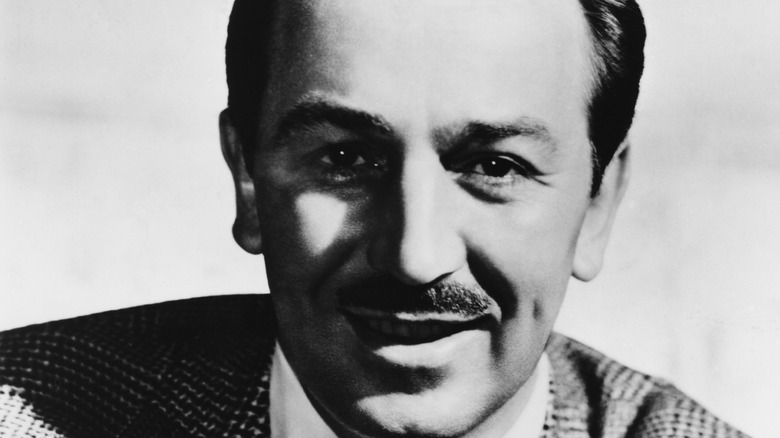
Why Walt Disney Stopped Being The Voice Of Mickey Mouse

The Tragic Death Of Doom Metal Singer Eric Wagner
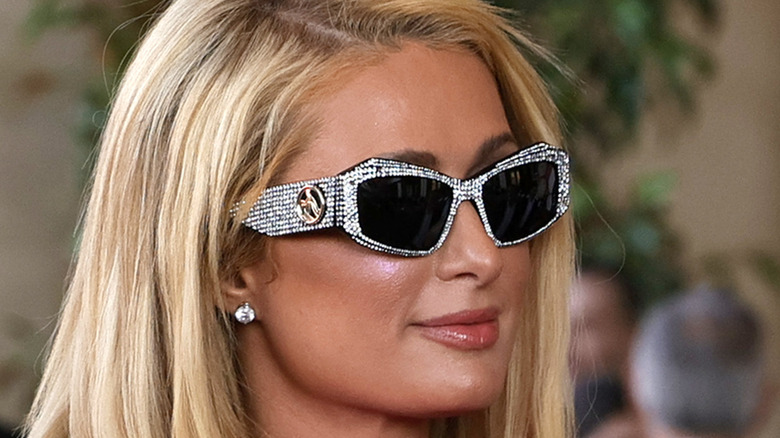
The Exotic Pet Paris Hilton Has Owned Might Surprise You
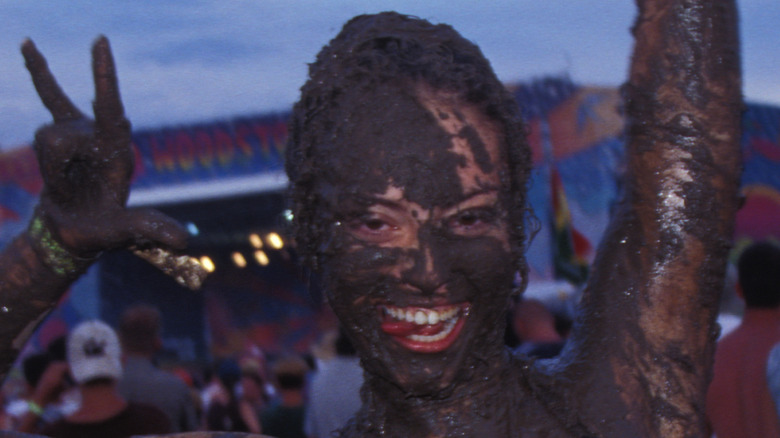
The Darkest Moments Of Woodstock 99
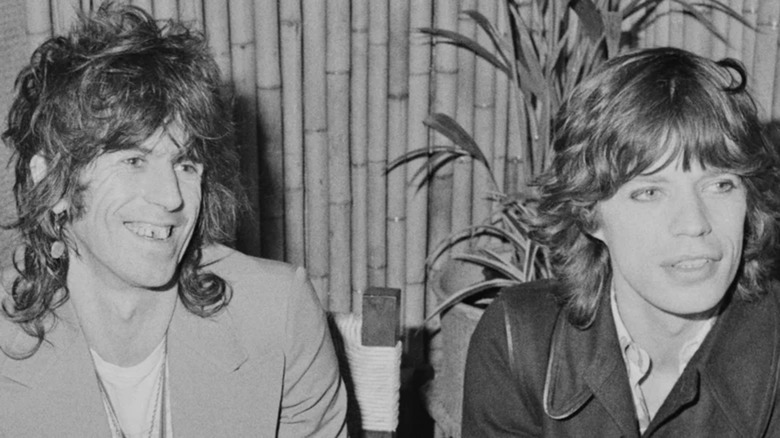
The Rolling Stones Made This Drink Very Popular
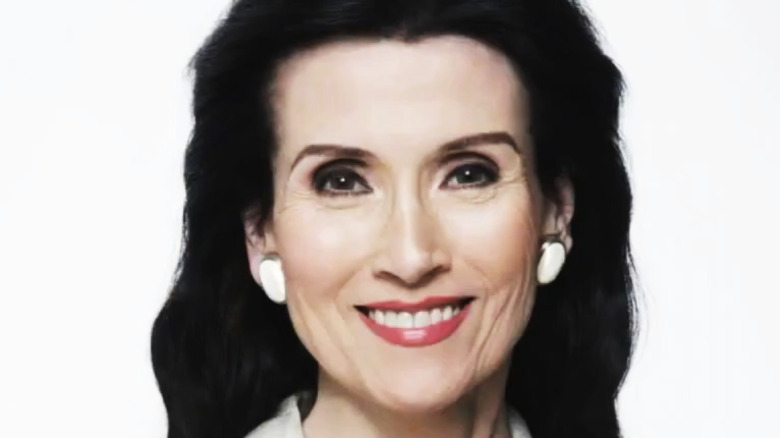
The Untold Truth Of Marilyn Vos Savant
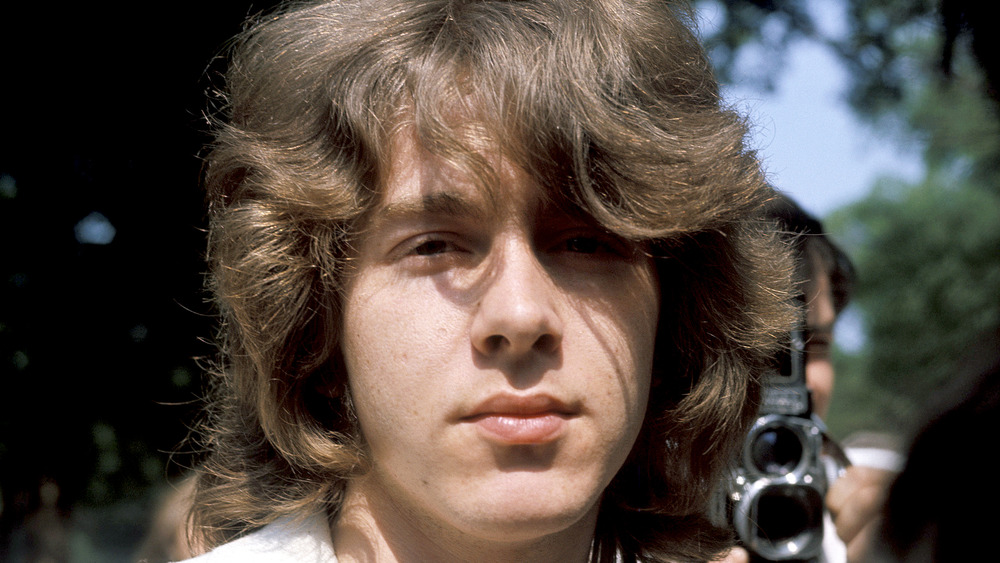
Whatever Happened To Mick Taylor From The Rolling Stones?

The Band That Over 35% Of People Think Gets The Most Unwarranted Hate

The Real Reason This 10-Second Video Just Sold For $6.6 Million
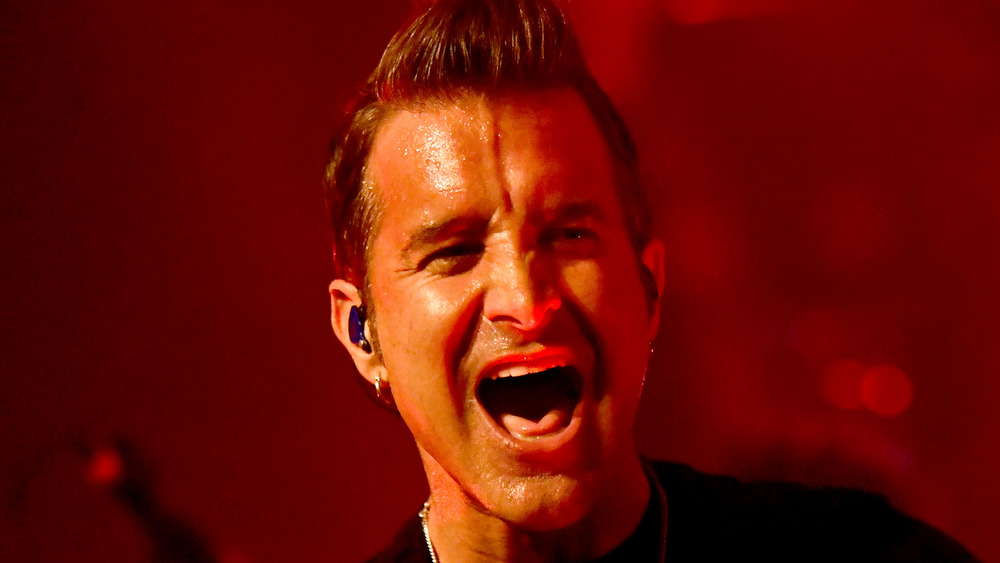
Musicians Who've Been Kicked Out Of A Crazy Number Of Bands
